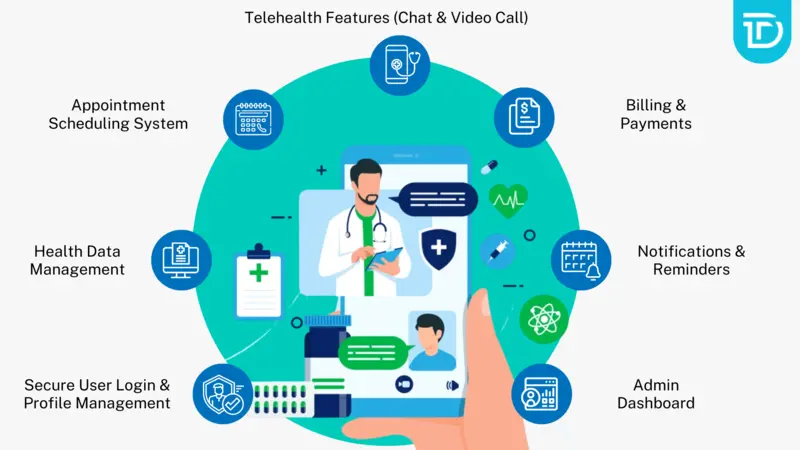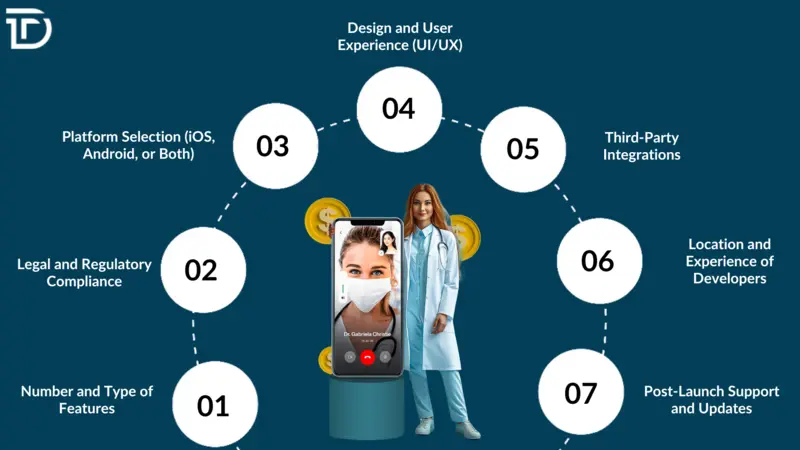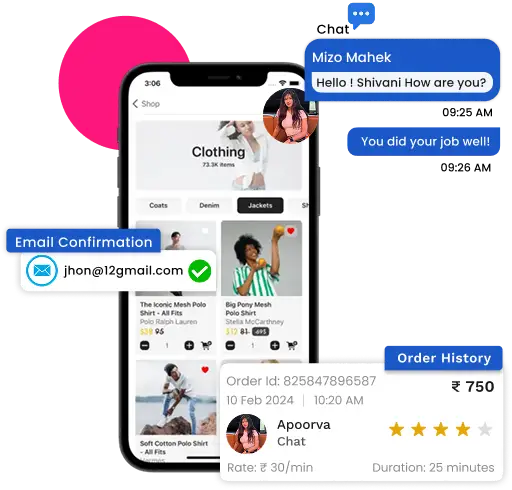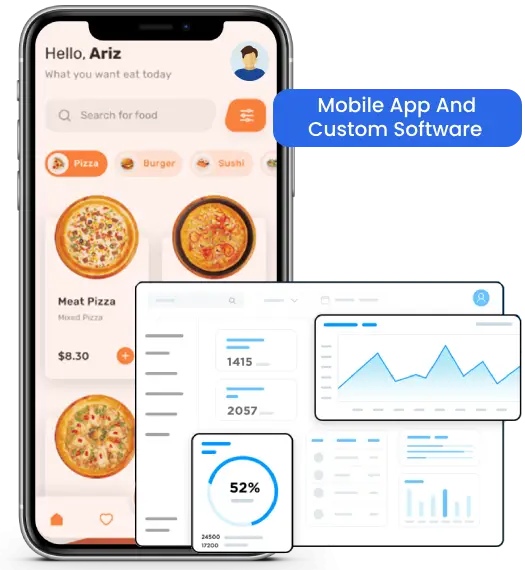Healthcare apps are transforming the way people manage their health. From booking doctor appointments to tracking blood pressure or accessing online consultations, everything is just a tap away. Patients gain more control over their health, while hospitals and doctors benefit from improved workflows and better service. Bringing a healthcare app to life requires significant effort and investment. Whether you’re a startup, a hospital, or an entrepreneur, understanding what goes into building a healthcare app and its potential cost is essential. Costs vary based on features, design, security, and even the location of your development team. In this blog, we present a breakdown of healthcare app development cost, explore the factors that influence pricing, examine typical expense categories, outline methods to estimate costs accurately, and offer actionable tips to reduce overall spending.
Healthcare App in a Nutshell?
A healthcare app is a mobile or web application designed to help users manage their health or medical services digitally. Such apps serve various purposes for users, including patients, doctors, hospitals, labs, insurance companies, and others.
For example:
- A patient-facing app might allow users to book doctor appointments, view test results, track symptoms, or get medicine reminders.
- A doctor-facing app could offer access to patient records, allow video consultations, or let doctors manage appointments.
- A hospital or clinic app may manage staff schedules, store medical data, or help with inventory tracking.
The goal of any healthcare app is to improve efficiency, access to care, and communication between medical professionals and patients.
What Are the Components of a Healthcare App?
Every healthcare app includes several key components that work together to create a seamless, secure, and helpful experience for both patients and providers. Let’s explore each component in detail:

Secure User Login & Profile Management
Users should be able to register, log in, and manage their personal information safely. Strong authentication and encryption are essential here, as this section often contains sensitive medical data like contact details, health history, and emergency information.
Health Data Management
The app should allow healthcare providers or patients to access, update, and manage medical records. This can include past diagnoses, lab reports, prescriptions, allergies, and diagnostic images, all stored in a well-organized and secure digital environment.
Appointment Scheduling System
Users need a simple way to book, cancel, or reschedule medical appointments. Meanwhile, healthcare professionals should have tools to manage availability, view upcoming consultations, and avoid scheduling conflicts, making the process smooth for both sides.
Telehealth Features (Chat & Video Call)
Virtual care tools like chat and video calls enable remote consultations, especially those in remote or underserved areas. These features help reduce wait times and provide easier access to medical advice without needing physical visits.
Billing & Payments
Apps should offer integrated billing systems that support online payments for doctor visits, lab tests, or insurance co-pays. Payment gateways must be secure, user-friendly, and capable of generating receipts and tracking transaction histories.
Notifications & Reminders
Timely alerts help users stay on track with appointments, medication schedules, and wellness routines. Notifications can also be used to share personalized health tips or updates from healthcare providers or the app admin.
Admin Dashboard
An intuitive admin panel gives hospitals or app owners control over the system. This includes managing users, viewing usage analytics, handling content updates, and monitoring overall app performance to ensure everything runs efficiently.
Factors Affecting the Cost of Healthcare App Development
Several key elements influence the total cost of developing a healthcare app. Understanding these factors helps in setting a realistic budget and making smart decisions during the development process.

Number and Type of Features
Adding more features significantly increases both the time and cost of development. For instance, a basic app that only allows appointment scheduling is far cheaper than a feature-rich solution offering video consultations, AI-based symptom checking, e-prescriptions, and real-time integration with wearables or fitness devices.
Legal and Regulatory Compliance
Strict industry regulations like HIPAA in the US, GDPR in Europe, or HL7 and FDA requirements ensure patient data is handled securely. Implementing these standards requires careful planning, extra development time, and specialized expertise, which ultimately increases the app’s complexity and overall cost of production.
Platform Selection (iOS, Android, or Both)
Deciding whether to build for Android, iOS, or both has a major impact on your budget. Native apps for each platform offer better performance but are more expensive to build and maintain. Cross-platform development using frameworks like Flutter or React Native can reduce costs but may have limitations.
Design and User Experience (UI/UX)
A healthcare app must be intuitive and accessible to users of all ages, including seniors. Designing a clean, user-friendly interface requires thoughtful planning and iteration. Investing in quality UI/UX design can increase initial costs but leads to better user retention and a more trusted experience overall.
Third-Party Integrations
Connecting your app with external services like Electronic Health Records (EHR), payment gateways, pharmacy APIs, or wearable tech adds layers of complexity. These integrations often involve licensing, API documentation, custom development, and thorough testing to ensure everything works securely and reliably within your app environment.
Location and Experience of Developers
Development costs vary widely depending on the team’s location and expertise. Hiring developers in the UAE, North America, or Europe is significantly more expensive than working with teams in India. More experienced developers may charge higher rates but usually deliver faster and more dependable results.
Post-Launch Support and Updates
Once your app is live, it will need constant monitoring, bug fixes, updates, and server maintenance. Ignoring this phase can lead to app crashes or poor performance. Budgeting for long-term support is crucial to keep your healthcare app reliable, secure, and aligned with user expectations over time.
Healthcare App Development Cost Based on App Complexity
Healthcare apps can vary significantly in both functionality and pricing depending on how advanced their features are. Whether you’re building a simple booking platform or a fully integrated digital health system, complexity plays a major role in determining the total cost. As features grow more sophisticated, development time, testing, and infrastructure requirements also increase. To help you understand what to expect financially at different levels, here’s a breakdown of healthcare app development costs based on complexity.
Basic App ($10,000 – $30,000)
Includes simple features like user login, appointment booking, push notifications, and basic admin panel. Ideal for clinics or small startups.
Medium Complexity App ($30,000 – $50,000)
Adds features like medical history, billing, lab report access, EHR integration, and user dashboards. Suitable for hospitals or growing health tech startups.
Advanced App ($50,000+)
Offers full telemedicine services, AI-powered suggestions, real-time health tracking, wearable device integration, multi-role access, and advanced data encryption. Designed for large-scale health platforms.
Healthcare App Development Cost Involved in Each Step
Each stage of healthcare app development contributes to the overall project cost, reflecting the time, effort, and expertise required. Understanding these phases helps you plan your budget more effectively and ensures nothing essential gets overlooked. The following breakdown explains the seven key steps, what each involves, and the typical cost estimates associated with them:
Requirement Gathering
The first step lays the groundwork for everything that follows. It includes stakeholder interviews, competitor research, selecting the right tech stack, defining the feature list, and ensuring regulatory needs like HIPAA or GDPR compliance are considered. Detailed documentation is created to align business goals with technical feasibility.
Estimated Cost: $1,000 – $2,000
App Design (UI/UX)
User interface and experience design ensures the app is intuitive, visually appealing, and accessible to all age groups. This stage involves creating wireframes, interactive prototypes, and high-fidelity screen designs with a strong focus on usability and accessibility, especially for older or non-tech-savvy users.
Estimated Cost: $3,000 – $5,000
App Development
This is the most resource-intensive phase, where both frontend and backend are built. Developers handle coding, API integration, database creation, cloud configuration, and user role management. Functionality comes to life here, turning wireframes into a working product across chosen platforms like Android, iOS, or both.
Estimated Cost: $15,000 – $30,000
Quality Testing
Before launch, the app must pass through multiple rounds of testing to ensure everything works smoothly. This includes manual and automated tests across different devices and browsers, performance checks, bug identification, security audits, and compliance verification to handle sensitive healthcare data reliably.
Estimated Cost: $5,000 – $10,000
Deployment
Once the app passes QA, it’s deployed to the Apple App Store, Google Play Store, and cloud platforms. The team handles server configuration, app store listing creation, performance monitoring setup, and ensures the app complies with each platform’s submission and review policies.
Estimated Cost: $1,000 – $2,000
Support & Maintenance
After launch, continuous support is essential to keep the app running smoothly. This includes fixing bugs, updating for new OS versions, maintaining server uptime, offering user support, and ensuring ongoing compliance. Maintenance is typically billed monthly or annually, based on service scope.
Estimated Ongoing Cost: $200 – $1,000/month or $2,000 – $10,000/year
Scaling & Feature Upgrades
As your app gains users and feedback, scaling becomes important. This stage includes adding new features like wearable device support, AI tools, multilingual support, or launching on new platforms. It also covers performance enhancements and user interface upgrades based on user behavior.
Estimated Cost: Depending on the upgrade scope.
Healthcare App Development Cost as Per Regions
Development costs can vary significantly depending on where your app development team is based. Factors like labor rates, regional expertise, and local regulations influence pricing across different countries. To give you a clearer picture, below is a region-wise breakdown of average hourly rates for iOS, Android, and cross-platform healthcare app development.
| Developer Location | Android Cost/Hour | iOS Cost/Hour | Cross-Platform Cost/Hour |
|---|---|---|---|
| North America | $100 – $150 | $110 – $160 | $90 – $140 |
| New Zealand | $80 – $120 | $85 – $125 | $70 – $110 |
| UAE | $70 – $110 | $65 – $120 | $60 – $100 |
| Europe | $60 – $100 | $65 – $110 | $50 – $80 |
| India | $25 – $45 | $30 – $50 | $20 – $40 |
Choosing Indian development companies offers an excellent balance of cost efficiency and high technical expertise. With a large pool of skilled professionals and proven experience in healthcare app development, India stands out as a smart outsourcing destination that delivers quality work on time and within budget.
How Do You Calculate Healthcare App Development Costs?
Planning your budget effectively means breaking down all potential expenses and being realistic about what is needed. Following is the smart way to estimate your healthcare app’s development cost:
Estimate Time for Each Feature
Start by listing every feature your app will include, such as login, appointment booking, or video calling. Estimate the number of development hours each will take. Multiply the total hours by your developer’s hourly rate to get a basic cost outline.
Group Features into Modules
Organize similar features into functional modules like patient, doctor, admin, or billing. This helps you better allocate resources and streamlines planning, development, and testing. Estimating costs per module also makes the budgeting process more organized and efficient.
Add Legal & Security Budget
Healthcare apps must follow privacy laws and standards like HIPAA, GDPR, or HL7. Set aside budget for legal consultations, data encryption, compliance documentation, and audits. Skipping this step can result in serious legal issues and additional costs later.
Include a Safety Buffer (10 to 20%)
Even with careful planning, projects can face delays, technical hiccups, or scope changes. Including a 10 to 20 percent contingency buffer prepares you for surprises and ensures the project continues smoothly without budget-related stress.
Count Ongoing Costs Too
Development doesn’t end with the app’s launch. You’ll need to budget for ongoing expenses such as hosting, updates, customer support, bug fixes, and compliance maintenance. These recurring costs are essential to keep your app secure, functional, and up to date.
Tips to Reduce the Cost of Healthcare Mobile App Development
Reducing costs while maintaining high quality is key when developing a healthcare mobile app. A smart strategy can help you avoid overspending without sacrificing essential features or user experience. Adopting practical approaches throughout the development process ensures your app remains efficient, scalable, and budget-friendly. The following tips offer valuable guidance to optimize your healthcare app development expenses:

Start Small
Begin with a Minimum Viable Product (MVP) that includes only essential features. This lets you launch faster and test market response. Once validated, you can gradually add advanced features, avoiding unnecessary expenses on unproven functionality.
Go Cross-Platform
Choose frameworks like Flutter or React Native to develop a single app compatible with both iOS and Android. This approach reduces development time and costs significantly compared to building two separate native apps for each platform.
Outsource Wisely
Hire experienced developers from regions with lower hourly rates but strong technical skills. Outsourcing to countries like India or Eastern Europe can help you get quality work done efficiently while staying within your budget.
Use Open Source
Leverage free tools, libraries, and frameworks available in the open-source community. These resources speed up development, reduce licensing fees, and allow you to focus on custom features instead of reinventing the wheel.
Choose Cloud Services
Go for cloud platforms such as AWS or Google Cloud instead of investing in your own servers. Cloud services offer scalable infrastructure, reduce upfront costs, and simplify maintenance, saving both time and money.
Follow Agile Method
Implement agile development practices that work in short cycles or sprints. It allows for early testing, quick feedback, and timely adjustments. It prevents costly changes late in the development process and keeps the project on track.
Automate Testing
Incorporating automated testing tools speeds up repetitive tests and improves accuracy. Automation reduces manual errors, accelerates quality assurance, and lowers testing costs over time by identifying bugs early in the development cycle.
Wrapping Up
Healthcare app development presents an opportunity to transform patient care, accessibility, and clinical workflows through mobile technology filled with convenience and innovation. Careful planning and cost estimation are very important. Complexity increases pricing, yet strategic approaches such as MVP prioritization, cross-platform development, agile workflows, and outsourcing help manage budgets effectively. Understanding SDLC phases, factoring in regulatory compliance, and budgeting for maintenance ensure realistic financial planning. Regional cost variations offer flexibility, while a well-justified contingency and ongoing support plan protect your investment. Thoughtful budgeting aligns development goals with healthcare outcomes, paving the way for impactful, sustainable apps.
As a leading custom mobile development company, Dreamer Technoland offers end-to-end healthcare app development services to help you build your app from start to finish. Our experienced team develops easy-to-use, secure, and fully compliant apps tailored specifically to your needs. Whether you’re starting from scratch or upgrading an existing app, we are dedicated to bringing your vision to life on time and within budget. We provide three months of free post-launch support to ensure your app runs smoothly after release. Our team utilizes modern development techniques to deliver efficient, scalable solutions. Plus, a dedicated project manager oversees every step of the process, keeping communication clear and your project on track. Let’s work together to create something that truly improves healthcare.







